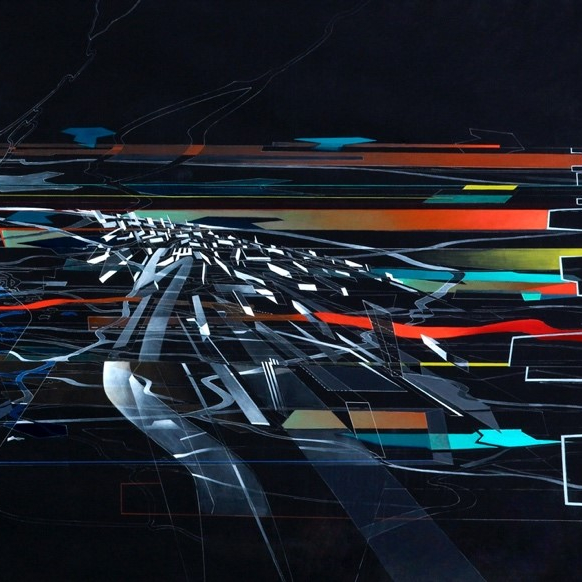Two exhibitions in London showcase Zaha Hadid’s design work and early visions for the city.
Before her serpentine pavilion commission in 2007 Zaha Hadid had never built in Britain. Prior to this, the Baghdad born proponent of parametricism had been the Doyenne paper architect who had bold ambitions for her adopted home city and place of her education: London. It’s here where two exhibitions highlight her work both as a dreamer and as a designer of objects. At the Zaha Hadid Foundation, Zaha Hadid: Reimagining London, displays the late architect’s ideas of the city that stemmed from when she was a student at the Architectural Association (AA) and beyond. Meanwhile, at the Hadid-designed Roca Gallery in Chelsea Harbour, Everything Flows puts on show Hadid’s work as a designer, displaying sculptures, jewellery, furniture and more.
The sculpted forms of the Roca London Gallery are a fitting home for ZHD’s undulating designs. Photo by Luke O’Donovan.
The sculpted forms of the Roca London Gallery are a fitting home for ZHD’s undulating designs. Photo by Luke O’Donovan.
Reimagining London starts with Hadid’s work from when at the AA. You’d be right to spot a slight OMA inflection here, Hadid’s tutors being Rem Koolhaas and Elia Zenghelis — who Hadid later taught with after graduating. This influence is most notable in an exploded axonometric of a project from her fifth year titled, Museum of the Nineteenth Century that sees a museum and hotel overlayed onto the site of Charing Cross Station, spanning railway lines and the Thames in monumental fashion.
Drawings from her project titled Malevich’s Tektonik, however, explicitly indicate Hadid’s biggest and most famous architectural influence — the Russian suprematist artist, Kazimir Malevich. The project from her fourth year proposes a 14-storey hotel by the Hungerford Bridge, represented in abstract cubes through collage, and plan, section and axonometric drawings.
Also on show is Hadid’s notebooks and sketchbooks which offer an insight into how she worked. Fittingly, one notebook is opened up to a page on notes from a lecture of Malevich. Hadid, however, isn’t impressed, describing it as “one of the most boring lectures I’ve been to.”
The showstopper, though, is Hadid’s London 2066 for Vogue Magazine. Produced in 1991 as Zaha was tasked with imagining the city 75 years in future (as Vogue celebrated its 75th anniversary), the painting is everything you want from a Hadid piece. Cubic volumes disappear into the distance; swooshes of colour glide effortlessly across the canvas, one of which represents the Thames as a myriad of elements overlay an abstract map of London. The exhibition is worth visiting for this alone.
‘Museum of the Nineteenth Century, Exploded Axonometric (Public Landscape)’, 1977-78. Courtesy the Zaha Hadid Foundation.
Source: Architecture Today

